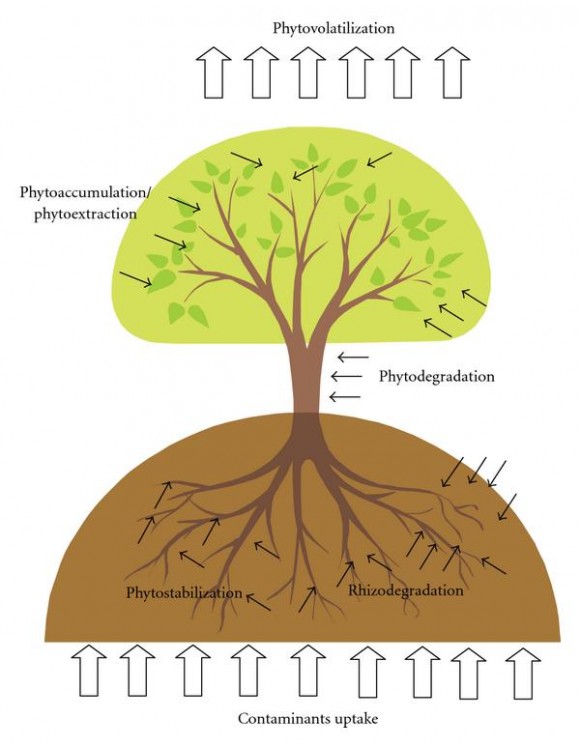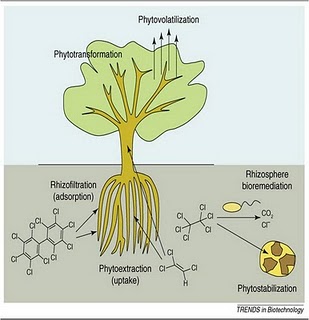Thursday, August 15th, 2013...4:40 pm
Creative Stormwater Management: Sponge Park Edition
It was announced earlier this Summer that the Gowanus Sponge Park, designed by the Gowanus Canal Conservancy and dlandstudio, is going to happen! Construction should start next year and be completed in 2015.
What is a “Sponge Park”?
From what I can tell, “Sponge Park” is the way that creative people say “constructed wetland and bio-filtration system”. The word “sponge” refers to the wetland plant’s ability to absorb and/or trap pollutants, something we left-brained types call “phytoremediation“. The park will be planted with species specially chosen to absorb pollutants in the canal, specifically heavy metals (like lead and mercury) and Polychlorinated biphenols (PCBs) which are known to be a big problem in the canal.
While I was working in Florida, I monitored a project called Chain of Lakes, that is pretty similar to the Sponge Park, so I am excited to see how this system works. Here is a rendering of what the sponge park will look like when it is finished (from NYdailyNews):
Looks nice, but how exactly are these plants going to remove pollution?
When we are talking about phytoremediation, plants can be classified as (1) non-accumulators who do not take up many pollutants at all; (2) accumulators who take up some pollutants; or (3) hyper-accumulators who can take up 100x to 1000x more pollutants than non-accumulators and still remain healthy plants. It is these hyper-accumulators that are typically used for relatively low cost, aesthetically pleasing remediation projects like the sponge park.
Plants have many tricks up their sleeves (branches?) to remove pollution. This Review from the International Journal of Chemical Engineering has a great breakdown:
- Phytoextraction/Phytoaccumulation: When pollutants are taken up or absorbed by a plants roots and stored within the upper part of the plant. This is often the case for metals. Here, the pollutant is stored inside the plant but it can can be released when the plant dies and decays. For this reason it is important to harvest or otherwise remove these plants after some time to ensure that pollutants are not returned the system. Researchers are working on ways to extract these metals from the harvested plants so they can be recycled.
- Phytovolitilization: When a pollutant is taken in by a plant and then makes it’s way through the plant to the leaves where it is volatilized into the atmosphere via the transpiration process.
- Phytostabilization: When plants immobilize a pollutant, usually via adsorption or precipitation within the root system. This does not “remove” the pollutant, but keeps it from moving within the soil column so it is less bio-available.
- Rhizofiltration: When pollutants are filtered through an aqueous (water-based) plant’s root system and are immobilized via absorption to the roots. This is the common mechanism at work in wetland systems
For these last two, where pollutants are detained in the root system, there are more remediation processes at work. Some plants can release special enzymes from their roots that aid in further breaking down pollutants. For example, certain enzymes are known to act as catalysts that speed up the microbial dechlorination of PCBs. This image from VanAiken and Gieger, 2010 shows a possible pathway:
Phytoremediation is what we call an in-situ or “on site” process. This is cool because in addition to filtering pollutants before they reach the canal, the plants themselves will hold a record of the types and amounts of pollutants that are entering the canal.
According to this diagram from the report on the park, stormwater will be diverted from the combined storm/sewer system and redirected to flow through the park before eventually being released into the canal. Studying what is trapped by the plants in the park could help us learn more about the sources of stormwater pollutants in the Gowanus sewershed.
…and it’s a park!
The sponge park definitely has more style than any stormwater project I’ve seen before (this is Brooklyn, after all). So, while it’s doing it’s job filtering pollution, the park will double as some much needed waterfront access for the region, and hopefully raise awareness of the unique environmental issues the canal faces. Who knows, maybe someday the water will even sparkle like it does in this conceptual drawing (from dlandstudio).












Leave a Reply